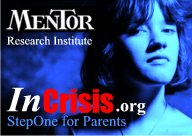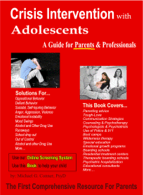By: Michael Conner, Psy.D Boarding schools and wilderness therapy programs offer services to parents for adolescents and teenagers who are "at risk" and those who may also have "special needs". Unfortunately, the terms "special needs" and "youth at risk" are unclear and potentially misleading. These terms are commonly used in wilderness programs and therapeutic boarding schools. They generally refer to children and teenagers who have problem behaviors, difficulty in school, may be using drugs, or are involved with kids who are in trouble and have conflicted relationships with their parents. While these terms are vague, they have are not without redeeming qualities. For one thing, they side-step the use of equally misleading and potentially harmful terms such as mental illness, mild mental retardation, antisocial personality or a psychiatric disorder. In general, youth-at-risk are vulnerable to have increasing personal and social problems by virtue of
The problems associated with the medical and biological factors described above constitute most of what we call classify as special needs. Youth who have special needs are at risk when their needs are not met. Programs that work with students who have special needs focus of providing support, alternatives and structures within education and social environments that help student learn, grow and reach their fullest potential. Children with behavioral and social problems may also have special needs since they may require a highly structured learning and social environment to adjust and change for the better. A single youth at risk may not have special needs. Risk is really a matter of probability which is best defined by the level of certainty that problems will continue or that additional problems will emerge. For example, the risk that problems will continue or worsen could be classified as low, moderate, high or extremely high.
Copyright 2000 to 2011, Michael G. Conner |


